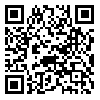BibTeX | RIS | EndNote | Medlars | ProCite | Reference Manager | RefWorks
Send citation to:
URL: http://jdm.tums.ac.ir/article-1-150-en.html
Background and Aim: Since the clinical studies conducted to explore the effect of bonding agents on the success of fissure sealant are limited in number, the present study was conducted to compare the effects of two bonding agents on the success of fissure sealant of the saliva- contaminated teeth.
Materials and Methods: In this study, 63 teeth of 35 students aged 6-8 with healthy and newly-erupted upper jaw molar teeth, were selected and divided into two groups. In one group, single-bond and In the other, SE bond were used. As the teeth were newly erupted and the distopalatal area being in contact with the gingival sulcus and this fact that, this area was impossible to isolate, the distal sulcus of the contaminated teeth and the mesial area capable of adequate isolation were assumed isolated. For each group, after etching, the teeth on one side were treated with a sealant and the teeth on the other side were first bonded and then treated with the sealant. Hence, four groups were formed: bonded/isolated, bonded/contaminated, controlled/isolated and controlled/contaminated for any bonding agent. The results of the treatment were assessed in terms of the success and failure and then analyzed using Mc Nemar, and Chi-square tests and Cochran.
Results: The results of the study indicated that:1. Saliva contamination caused a significant increase in sealant failures(p<0.05).2. Use of the two bonding agents significantly increased the success of the sealant(p<0.05).3. Use of the two bonding agents significantly increased the success of the fissure sealant on the saliva-contaminated teeth, even more than when the teeth had been isolated and with only fissure sealant(p<0.05). 4. For the contaminated enamel, the results of SE bond were better than those of the single bond (p<0.05). However, in isolated condition the results of using single bond were better (p<0.05).
Conclusion: The results of the study supported the use of these two bonding agents in the treatment of fissure sealants under both isolated and contaminated conditions. Further, more SE bond seemed to be less sensitive to saliva contamination.
| Rights and Permissions | |
 |
This work is licensed under a Creative Commons Attribution-NonCommercial 4.0 International License. |




